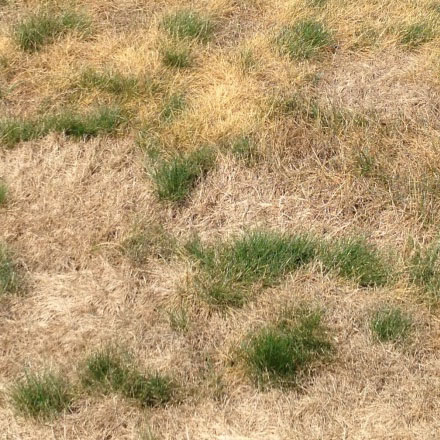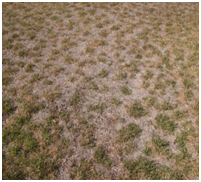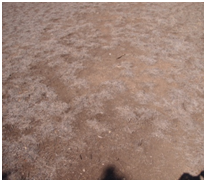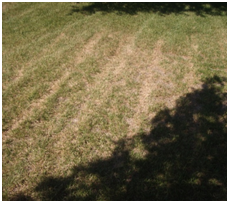
Recognizing the Difference Between Drought Affected Lawns and Pest Infestations
Central Texas lawns are subject to a wide variety of weather conditions and pest infestations. This region typically endures prolonged periods of drought. Yards stressed by drought may have a similar appearance to those suffering from pest infestations. The difference between the two conditions are subtle but important to note in regards to the treatments applied to them.


The photo above left is St. Augustine grass that lacks moisture and needs hydration. The best treatment for this condition is to remove the thatch (dried dead grass) using a simple garden rake, dispose of the debris, and fill the empty spaces with either dillo dirt or compost. Then water deeply until the St. Augustine runners (stolens) begin to re-populate the affected areas. Watering deeply means applying enough water so that the grass seems spongy to the touch or saturated.
The photo above right shows a yard, again St. Augustine, that has been destroyed by a pest infestation. Common infestations among Central Texas lawns include chinch bugs, grubs, and fire ants. In many cases the affected areas may have the same patchy appearance as grass suffering from drought. The difference is that pests burrow into the soil and eat the roots of grasses. So for a short time both lawns have the same appearance. But without roots to anchor the grass to the soil the lawn simply blows away in the wind. The treatment for a pest infested lawn is to start with a hose end pest control treatment; Triazicide by Spectracide is a good example. 1-2 treatments to the affected area should kill any pests without damaging healthy grass. Once the pests have been eliminated, de-thatch the area with a rake, then either re-sod or add compost/dillo dirt then water thoroughly until new grass fills in the empty spaces.

The photo below shows another example of drought stricken grass that could be considered to have either an infestation or damage caused by leaky mowers. This problem is commonly seen during times of drought combined with intensely high heat over prolonged periods. The lines occur because the roots of the grass are dead or stressed and the weight of the mowers, even small push mowers, can cause marks in the yard. The solution is to mow less often and water deeply. For example, if you mow twice a month, move to a three week cycle. And again, watering deeply means complete and total saturation of the roots of the lawn. Even if the city mandates a once weekly watering schedule during times of drought, increase watering times so that the water permeates through to the roots. Grass must be hydrated and healthy or mowers may cause the type of damage seen below.
For more information and other helpful tips please visit our website at www.northwestlawn.com.
